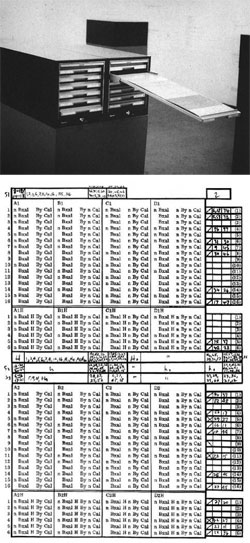Hito Steyerl, “Is a Museum a Factory,” e-flux journal no. 7 (June 2009) →.
JiaJia Fei, “Digital as a Dimension of Everything,” The Exhibitionist, Dec. 19, 2013. →.
See →.
Lev Manovich, The Language of New Media Cambridge (MIT Press, 2001), 218–219 and 221.
Matthew Clair has identified five cultural logics of neoliberalism in the course of his research into avant-garde literary production in the digital age, outlined in his presentation “Rethinking Technology and Culture: Digital Technologies and Neoliberalism in the Literary Field,” delivered at the conference Theorizing the Web, April 26, 2014. They include: Entrepreneurship, or the value of the freedom of the individual in the marketplace, specifically the liberty to work when, how and where one prefers; Market Faith, that the market is itself a rational institution; Profit-Maximization: any product—material or symbolic—should be placed in the marketplace and valued in such a way as to maximize the economic profit that the seller might receive; Efficiency: balancing the quality of the product with the speed and cost of its production; Ego-centricity: values the individual over the community, often at the expense of global concerns.
Rob Kitchin, The Data Revolution: Big Data, Open Data, Data Infrastructures & Their Consequences (Thousand Oaks, CA: Sage, 2014), 48 and 61.
Ibid.
Karsten Schubert, The Curator’s Egg: The Evolution of the Museum Concept from the French Revolution to the Present Day (London: Ridinghouse, 2009), 67–80.
Lane Relyea, Your Everyday Art World (Cambridge, MA: MIT Press, 2013), 17 and 181.
Kitchin, The Data Revolution, 3.
Manovich, The Language of New Media, 227–28.
This development refers in part to the intramural debates about curating new media art. The phrase “Art Formerly Known as New Media” is taken from an eponymous exhibition curated by Sarah Cook and Stephen Dietz in 2005 at the Banff New Media Institute, whose works “challenge[d
David Joselit, After Art (Princeton: Princeton University Press, 2012), 2.
Ibid., 56, 55, and 89.
It is not my intention to discuss the definitions of the term "post-internet" or to debate the genealogy of this concept, apart from acknowledging its relation to some aspects of the problems for the institution at large. For an extensive exploration of the genealogy of the term, see Karen Archey and Robin Peckham's .pdf exhibition catalogue for "Art Post-Internet" at the Ullens Center for Contemporary Art →.
Artie Vierkant, "Image Object Post-Internet," 2010 →.
Boris Groys, Art Power (Cambridge. MA: MIT Press, 2010). Groys talks of the impetus for artists to compete on the same open market as mass media.
Donald Preziosi, "The Art of Art History," in The Art of Art History: A Critical Anthology, ed. Donald Preziosi (New York: Oxford University Press, 1998), 511.
Vierkant, "Image Object Post-Internet."
Groys, Art Power, 84.
Ibid., 85.
Boris Groys, “Entering the Flow: Museum between Archive and Gesamtkunstwerk,” e-flux journal 50 (Dec. 2013). →.
In After Art, David Joselit speaks of a similar concept, namely the American museum as ”a massive money-laundering operation: turning finance capital into cultural capital and putting a democratic face on the accumulation of wealth” as well as the notion of images as currency. See After Art, 71.
Daniel Palmer, “Share and Share Alike: Museums and the Digital Image Explosion,” The Exhibitionist, Jan. 6, 2014. →.
Evgeny Morozov is among the more prominent voices describing the abuses of Internet Centrism, namely in To Save Everything Click Here (2013) and elsewhere, though the concept has a prehistory in media theory.
Preziosi, "The Art of Art History," 511.
